In mid-December I read a blog post at Word Nerdery called “My Portmanteau is Packed; I’m Ready to Go“. I always enjoy reading Ann Whiting’s posts. To me it is like finding out your favorite author has written another chapter! I get comfortable and ready to savor what I’m about to read because I know it will sometimes tickle me, sometimes stump me, but always fascinate me!
Portmanteau words are something I’ve been intending to have my students explore, so I was especially interested in this post. My heart was saddened however, when I read what the inspiration was for this look into portmanteau words. Simply put, the word was smog. And it seems there was a lot of it in Malaysia, Indonesia and Singapore. Land being cleared for farming and palm oil plantations was leaving the air filled with noxious pollution. Without minimizing the seriousness of the situation she was surrounded by, Ann invited her readers to take a closer look at the word <smog>.
After finishing the post (and I encourage you to visit her blog and do the same), I was excited to see what my students would do with this topic. Over the next few days, as students came to me ready for a new orthographic investigation, I asked them to find out what they could about portmanteau words. First they were to find out what they were. Second they were to make a list of some of their favorites. It didn’t take long before they were huddled around computers, sharing their discoveries and often laughing at the strange images being brought to mind. Most were especially delighted by the imaginative blends that involved animals.
What fun! We went to the Gallery that is part of the Real Spelling Toolbox and viewed the film on Blend Words (Portmanteau). We found out that there were three different ways to create a portmanteau. They can be juxtapositional, overlapping, or nested. We started to recognize some of those types in the examples we found.
Since we knew that Lewis Carroll was the one who started calling blend words “portmanteau words”, we decided to look at his famous poem to see which portmanteau words we could spot. What a treat! “Callooh! Callay!” Everyone looked a copy of the poem over on their own. Then I shared a youtube video I had found in which a very talented 10 year old recitesd this famous poem. Unfortunately, the video I mentioned is no longer available to the public. I am substituting one by the muppets that I’m sure you and your students will enjoy!
We talked a bit about how his recitation brought the poem (which seemed to be full of strange words that nobody knew) to life! Suddenly there was a story here! It still wasn’t perfectly clear, but the gist of it was! Then we compared that to Johnny Depp’s partial sharing of the poem.
The consensus was that this version was a bit creepier, yet we felt the pull of wanting to hear more.
We found the following portmanteau words:
slithy, which is a combination of slimy and lithe
mimsy, which is a combination of miserable and flimsy
galumphing, which is a combination of gallop and triumphing
chortle, which is a combination of chuckle and snort
We played with the words of “The Jabberwocky” for days. We analyzed the grammar in some of the sentences. Here is a sample of that. I realized as I watched it back that the apostrophe in (‘Twas) was put in the wrong place. If it represents the missing letter, it needs to be before the letter <T>. The other thing I found out was Lewis Carroll may have intended the word ‘brillig’ to mean a certain time of day. If that is true, then it would be a noun and not an adjective. But it would still be a subject complement.
The students surprised themselves by being able to identify some grammatical structure to this sentence, which at first had only felt full of strange foreign words. Of course, we could make grammatical sense of this sentence because in English, it is the order of the words that helps signal relationships between the words in the sentence. We know that we expect to find adjectives before nouns. We know that we expect to find articles before nouns. We know the predictable parts of speech to look for following a preposition. And here is where I neatly planted a seed. Latin wasn’t like that. Word order was not that important. The Romans knew whether a word was a subject or an object by its suffix, and not by whether it was in front of or behind the predicate.
We finish with this recitation of The Jabberwocky. We thank Lewis Carroll, Word Nerdery and Real Spelling because these days we quote the Jabberwocky when it suits us, and we blurt out portmanteaus that we are inventing on the spot! We are changed!

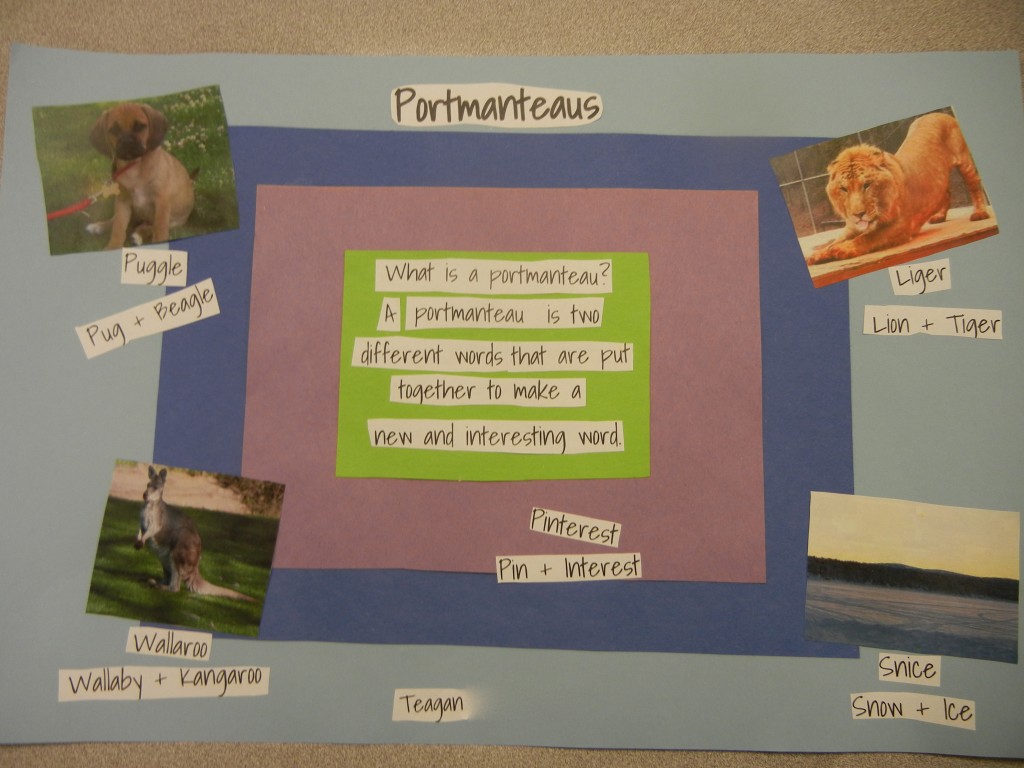


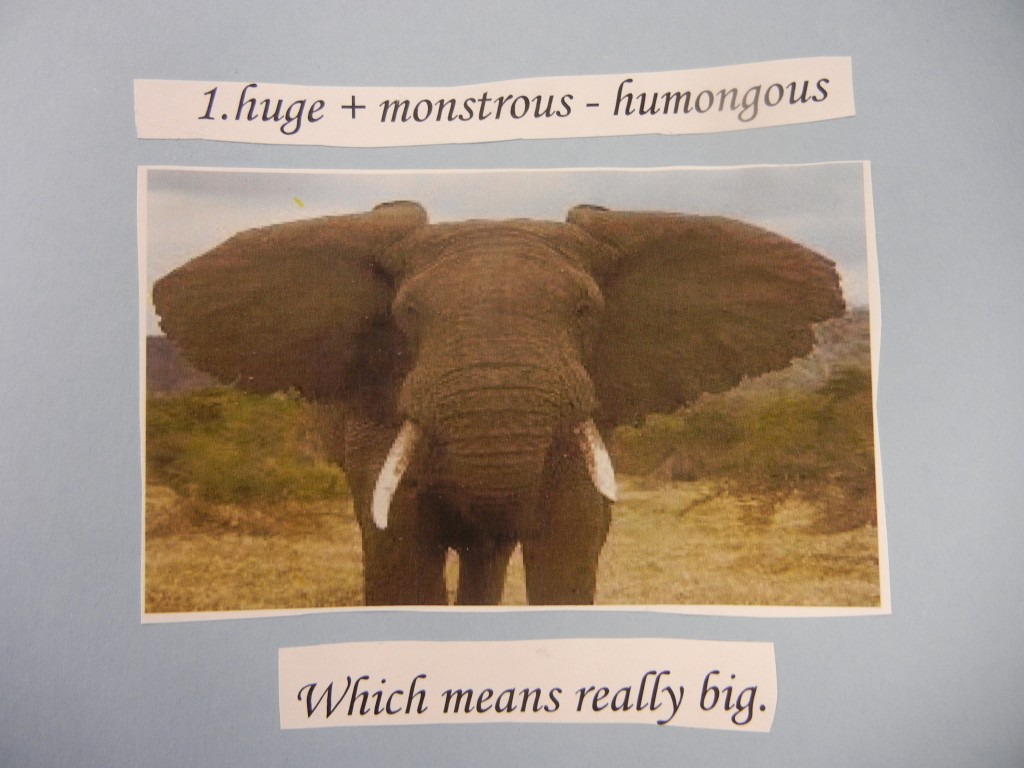
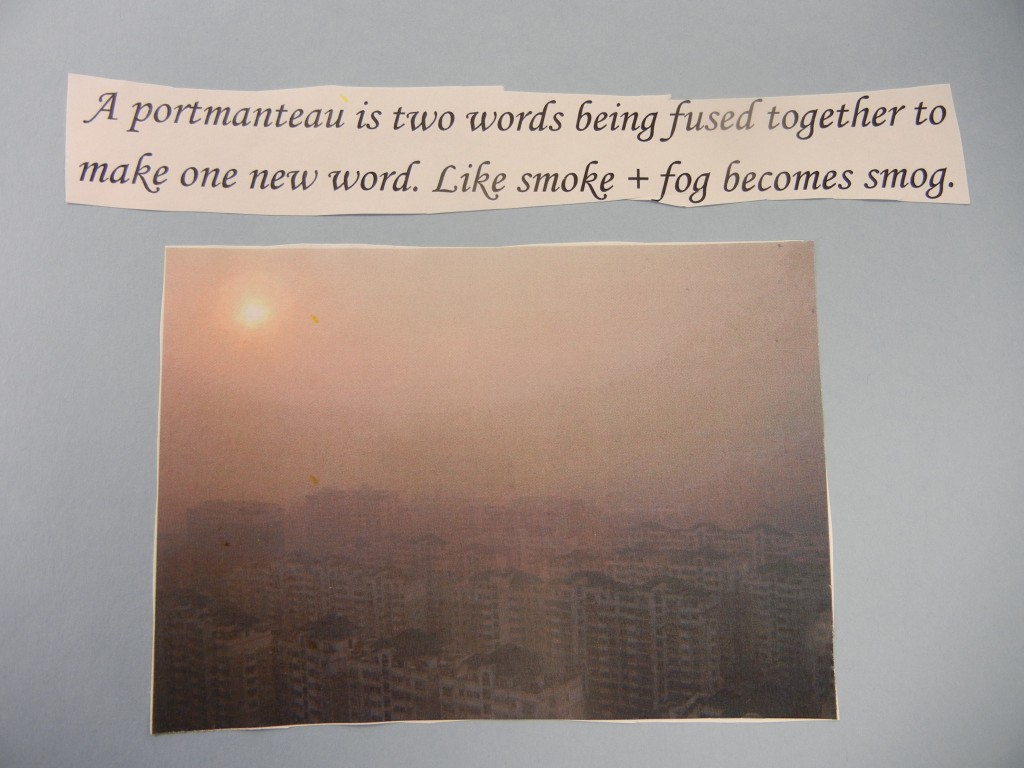
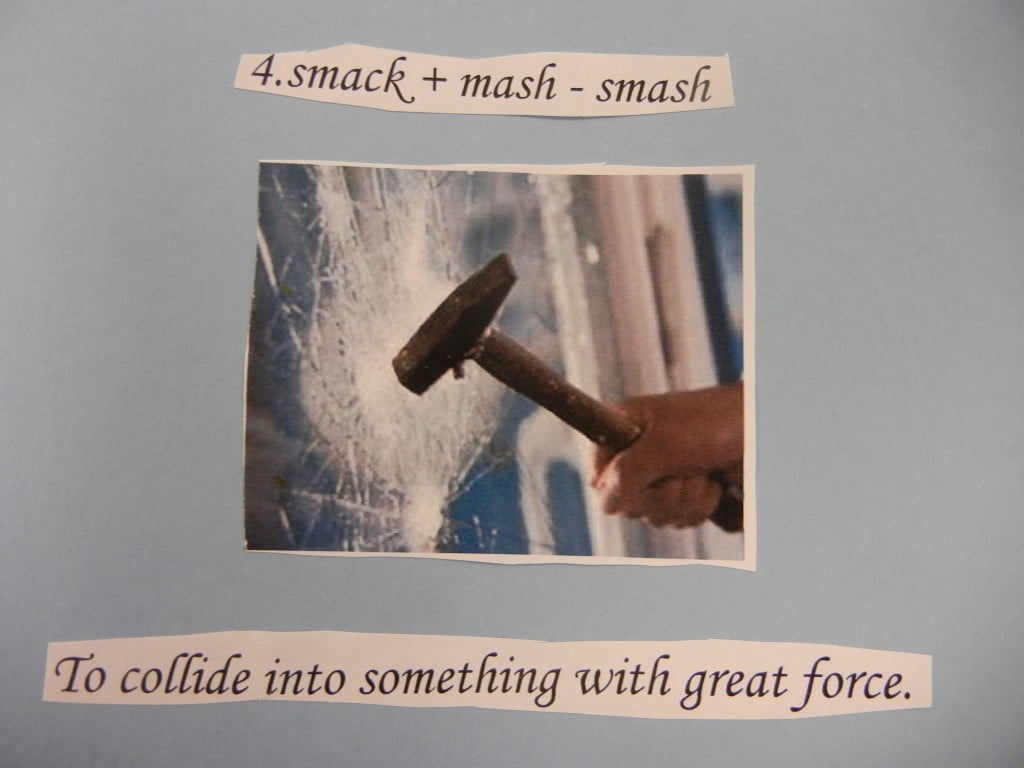
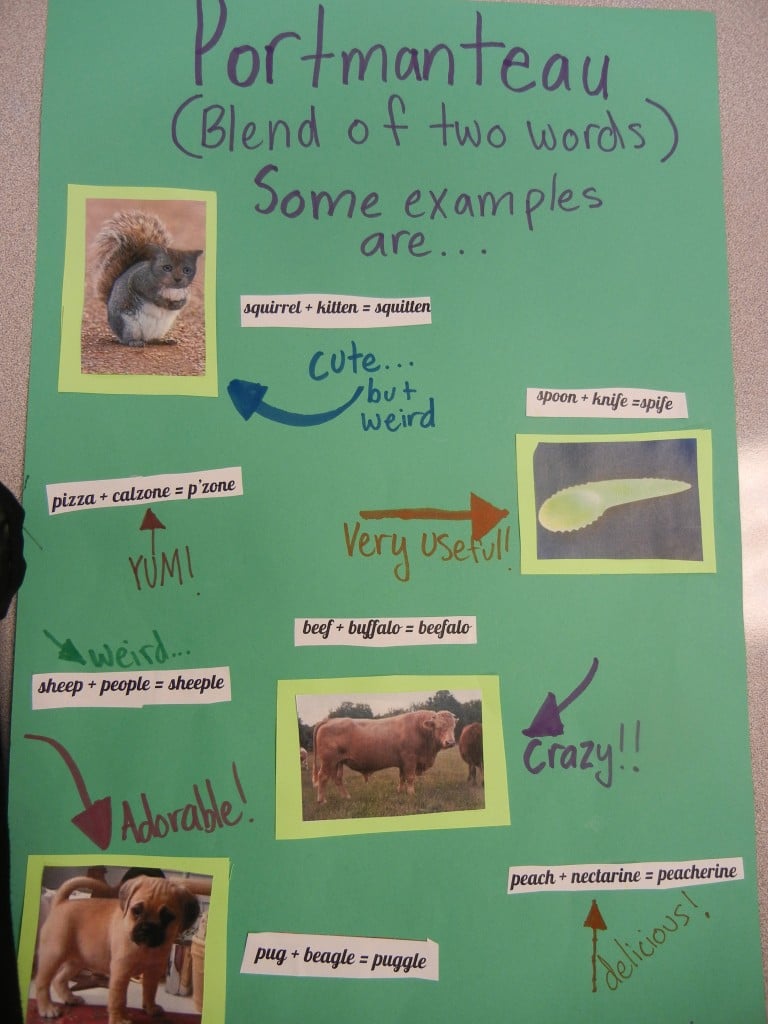
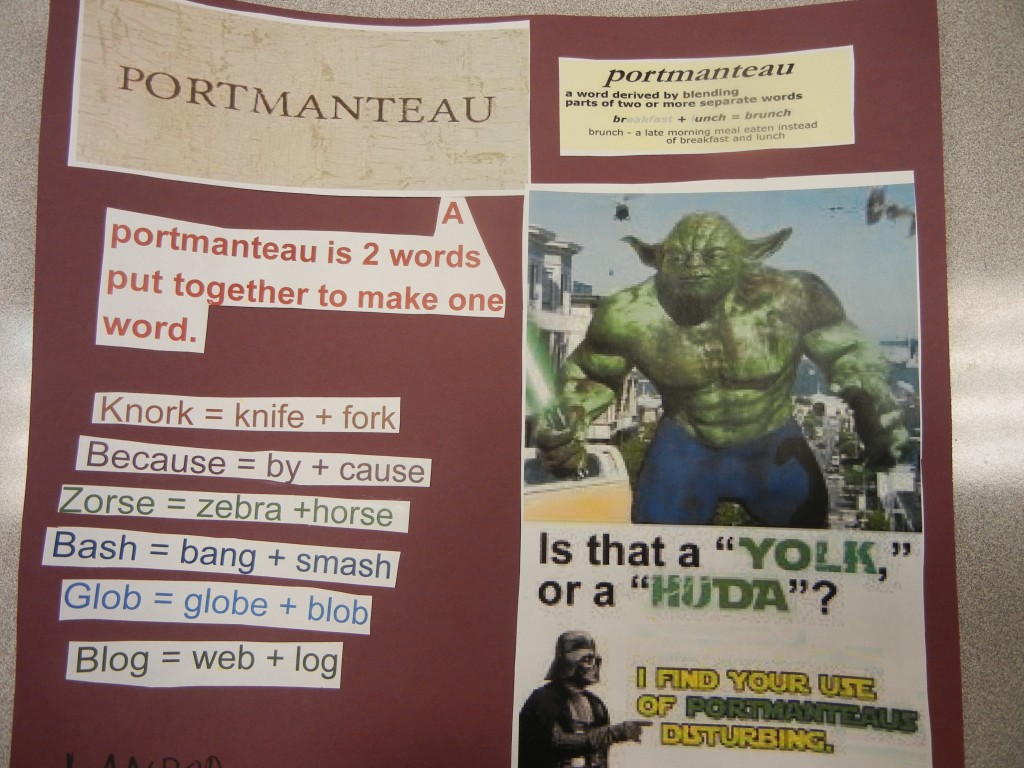
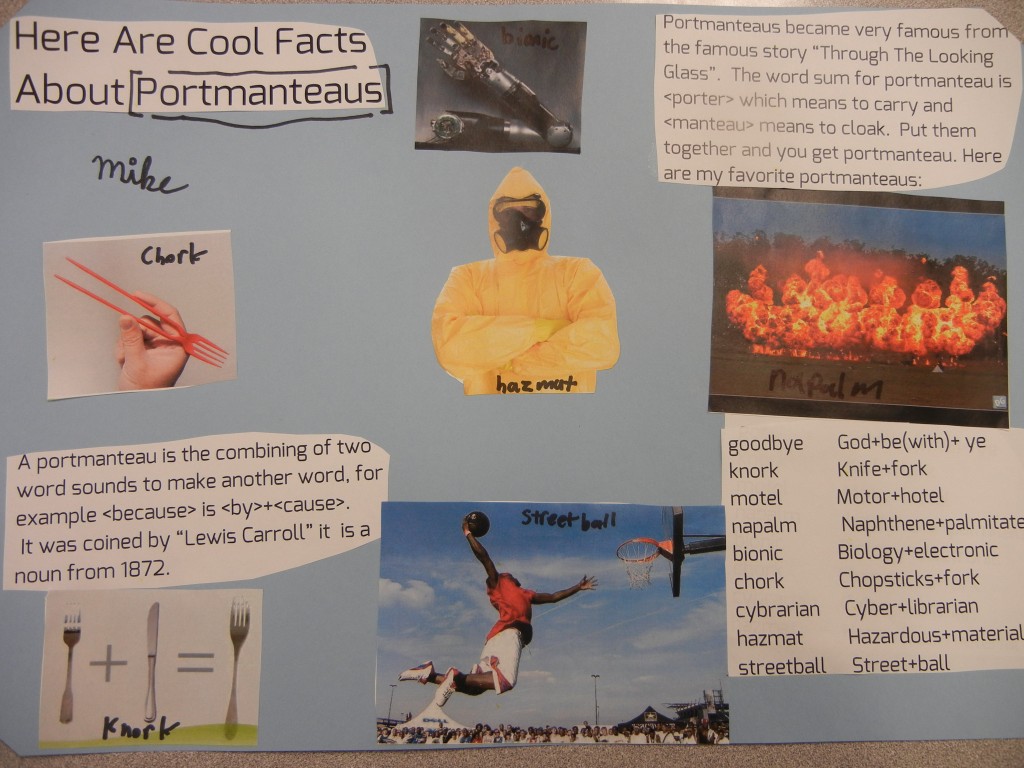
Mrs. Steven,
Just a quick note from teacher to teacher — Thank you for posting your Sentence Analysis! We watched some of this as a class — it was fun to see my students watching another class take sentence analysis even deeper than they are doing — very inspiring to them and a learning opportunity for me!
We have been working with a resource (http://www.linkingblocks.com/) that is designed for those who need a manipulative to help them remember parts of speech — I didn’t even know such a resource existed–and it has been a huge help! They are color-coded, wooden blocks with a groove in the top to add a word card example of that part of speech — you may know about them already. At any rate, these blocks have been invaluable for my students. While they watched your students tackle analysis of the first stanza of Jabberwocky, it was fun to watch them enthusiastically shout out “No!, ‘the’ is white! It’s an article!” or “Yes!, that’s an adjective, I know ‘cuz it’s the purple one!”
Great job and kuddos to you for bravely putting your teaching out there for others to learn from and enjoy!
Lisa
Dear Mrs. Steven’s Classroom,
This is Mrs Barnett’s class from Fenton, Michigan. You are across Lake Michigan from us. We are 4th graders and we do kind of the same thing you do with studying base words and analyzing the words and how to put them together (synthesizing) and learning the meaning and where it’s from. We really like learning this way. Do you guys like to learn about prefixes, base words and suffixes like we do?
How many kids do you have in your classroom? We have 9 kids in our group and Mrs. Barnett has more kids in other groups all day.
We studied poetry last week and watched your Jabberwocky video today. Here are some of the things we said about it:
~I like how you guys read the words
~You picked such a good story to read
~I think you study and understand some words you did not know like the adjectives, articles, nouns and verbs, we do that too!
~I like how you read the poem with a deep voice, high voice, and volume. It made it sound like it was read back in the 1700’s or 1600’s.
~When you read the story it helped us understand the words and story and where it’s from and who the characters are in the story.
~What do you think the Jabberwocky looked like? I think it looked like a giant Jack rabbit and my friend thinks it looks like a dragon.
Even though it was a strange story, you made it enjoyable, it was pretty cool!
We enjoyed reading Jabberwocky in class too, thank you for showing us that making our voices go up and down makes it more interesting.
Sincerely,
Mrs. Barnett’s Diamond Group
Mary-Beth as always the work of your classes is filled with enthusiasm and exuberance. I’m grateful that you read ‘Word Nerdery’ and so glad that you plunged into portmanteaux and once on the portmanteau road, off on your own Jabberwocky quest. I so enjoyed watching the collaborative analysis of the grammatical structure of Jabberwocky – so pleasing to see how much grammatical structure your students understand. As we too in grade 7 wrestle with some of these grammatical concepts, I will be playing this video to my students after they also attempt to analyze the first verse – sadly, with not nearly as much confidence as your nimble students demonstrate! I love Jabberwocky for its wordplay, its gripping narrative, and for the ability to do just as you have done with the students and to show them that although they may not be able to give the denotation of the ‘nonsense’ words, they can already tell such a lot about these words from the position the words occupy in the sentence. Inspiring work!
Oh, my goodness! I WANT TO BE A 5TH GRADER IN Mrs… Steven’s class!! I’ll bet all of you know how lucky you are 🙂
LOVE the reciting of the Jabberwocky poem! Can’t wait to share this wonderful post with my 5th graders.
Thank you Lisa! Reading the Jabberwocky Poem has been so much fun. We had the opportunity to again realize that pronunciation is not the first consideration when looking at an unfamiliar word! We relied on our knowledge of how the words are used in the sentence, and how the sentences, one after the other, create the story to know what mood to set and where to place emphasis as we read the poem.
Your investigation made my morning! Poems, posters and passion explode in your classroom. I enjoyed how you linked your post to Ann Whiting’s fascinating walk through the history of Portmanteau words. Your ability to link literature, grammar, history, research and more is exceptional; your classroom is full of rich learning opportunities for all. No scope and sequence could provide the level of learning and thinking that this study has provided for your students (and for us!) As I look at the morning news, I read “Snowmaggedon2016” and wonder about this word as I dress in my leggings and head for jazzercise! Thank you and your brilliant scholars for the enlightenment.
Mary,
Thank you! Ann Whiting has been an inspiration to me since I discovered her blog. She pulls so much from single words and then weaves those words together into a bigger story. Every post is a delightful journey and I always walk away with a full portmanteau. 🙂
The sentence analysis really pointed something out to my students about the structure of English sentences. What a valuable thing for them to have seen as we have already begun learning about Latin nouns and verbs!